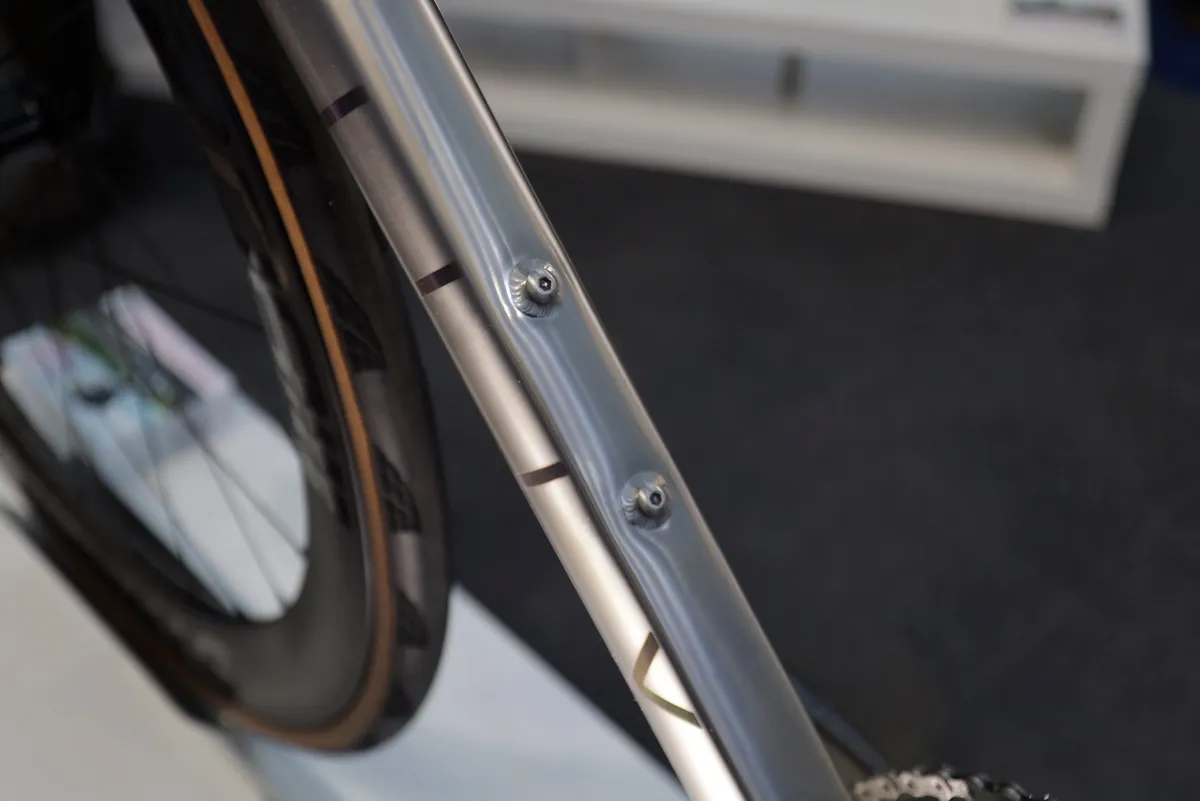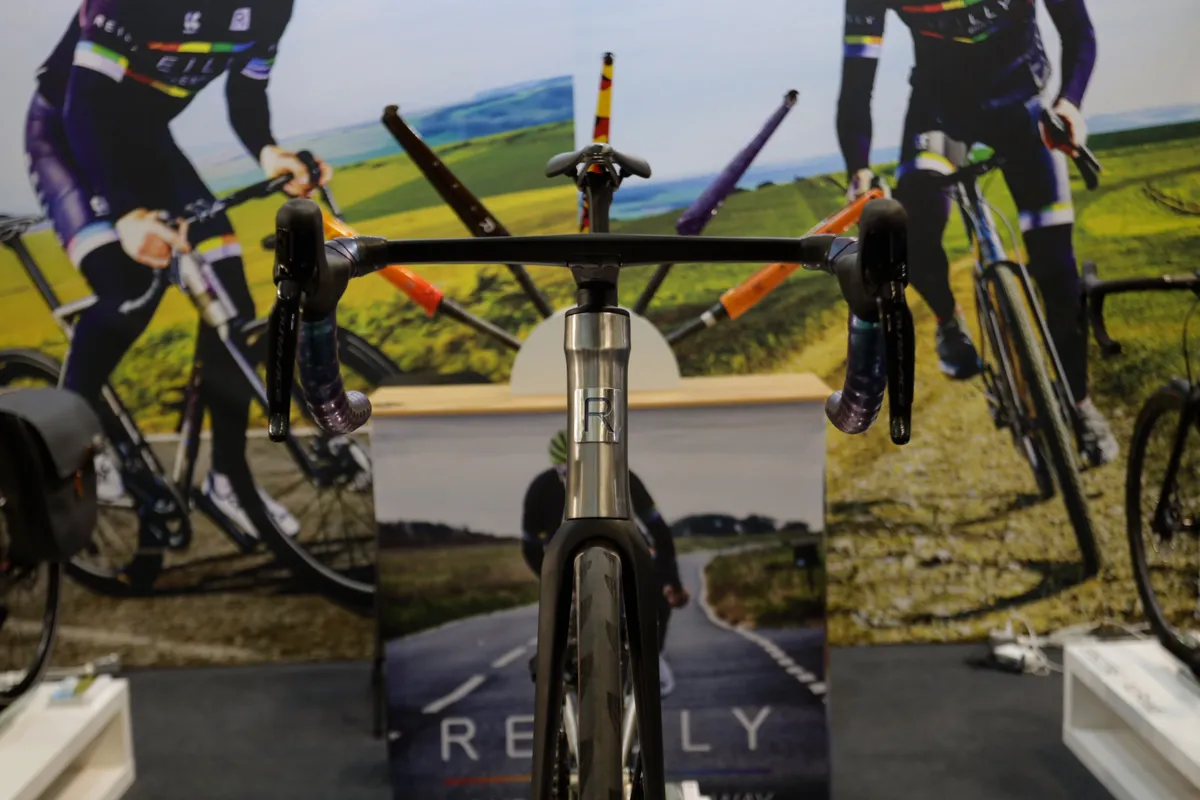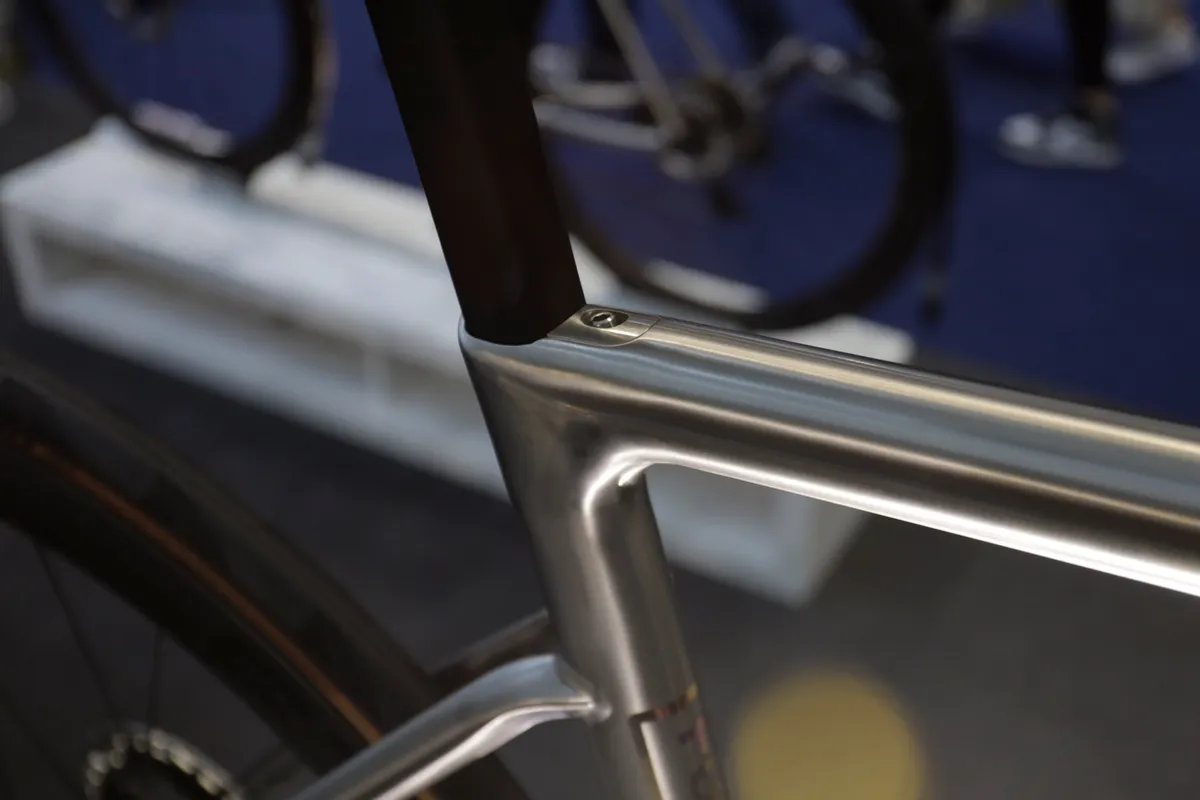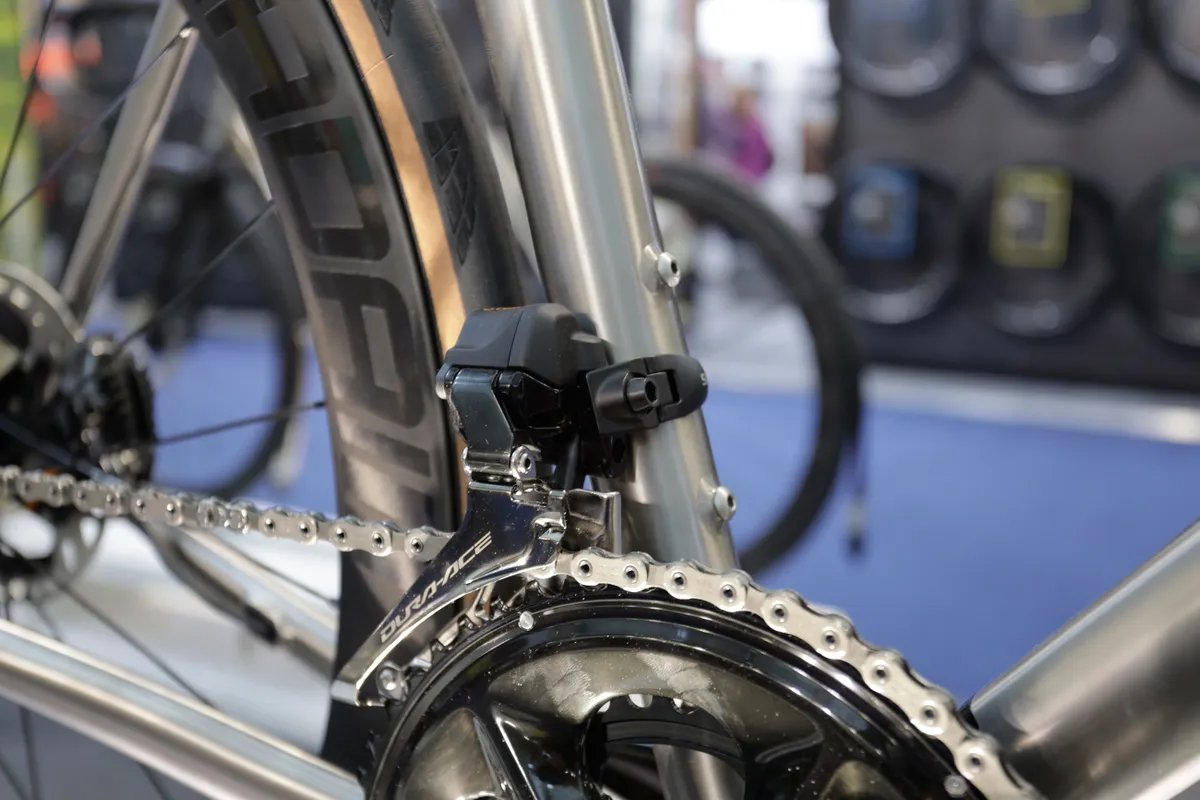Reilly Cycleworks has released the Fusion, a new titanium road bike that uses investment casting to create an aero frameset, not unlike a carbon road bike in appearance.
Launching the Fusion at the Cycle Show in London this weekend, Reilly’s business development director, Chris Ratcliff told BikeRadar that the brand wanted to create a bike that could reach beyond Reilly's typical customer base.
“If you look at our clientele, historically,” Ratcliff says, “we’ve had older men who want the comfort of a titanium ride. But if we can give titanium a more modern look then maybe we can appeal to a slightly younger audience.”
After Reilly’s founder, Mark Reilly, passed away last year, Ratcliff says the Fusion is also a way for the brand to stay true to his legacy, using the geometry developed by the renowned frame builder.
“We wanted to continue with Mark Reilly's geometry, but we wanted to innovate too, and see how we could begin to play with these casting methods to create new shapes from metal,” Ratcliff explains.
The Fusion’s pricing starts at £7,500 but rises to £10,000 for the model on display at the Cycle Show, which comes with Shimano Dura-Ace Di2 R9200, Strada PAD-55 carbon wheels and a Deda Elementi Alanera DCR integrated carbon handlebar.
How is the Reilly Fusion made?

Ratcliff says the production methods behind the Fusion might not be what's first suspected from such an advanced-looking titanium frame.
“When we people look at the Fusion, I think they presume the interestingly shaped parts are 3D-printed, but actually, we’ve used a very traditional method of casting."

Reilly uses investment casting – a process whereby wax is used to create a mould – to create the Fusion’s head tube, bottom bracket shell, seat cluster and dropouts from 6AL-4V titanium. These parts are then combined with tubing made from 3AL-2.5V titanium to create the frameset.
While this is unusual, it's not unheard of in the world of cycling. The Bossi Strada SS released in 2020 uses the same method, and Ratcliff says Reilly uses the same factory as Bossi for the titanium casting.
“[Investment casting] allows us to mimic some of the shapes that would traditionally be associated with a carbon mould,” Ratcliff adds.
“It allows us to have a more modern design, compared to our more traditional bikes."
Carbon road bike features

Beyond initial looks, the Fusion has a number of features that we would expect to find on many of the best road bikes made from carbon.
While the Reilly Gradient adventure bike has some of its cables run internally, the Fusion marks the first time Reilly has run all cables internally.
The Fusion on display at the Cycle Show, taking place in London's Alexandra Palace, runs its cables and hoses through the integrated handlebar and down through the front of the head tube. The cables can be accessed through a port on the underside of the bottom bracket.

“It’s created a spaghetti junction around the bottom bracket, but it allows us to have that cleanliness that’s usually associated with a carbon frame,” Ratcliff says.
The Fusion here has the new semi-wireless Dura-Ace Di2 groupset, which makes running cables internally a bit more straightforward. Ratcliff says “you’d struggle to run a mechanical groupset with the internal routing".
The bike also has a Kammtail seat tube with a D-section seatpost. The post is held in place with an internal clamp featuring a neat titanium plate, creating a design not dissimilar to many seatpost clamps on the best aero road bikes.

The dropped seatstays also give the Fusion an aero look, as does the shaping of the head tube.
When it comes to graphics, the Fusion at the Cycle Show features anodised logos but Reilly also has mirror or brushed black finishing details listed on its website.
Ride trumps weight

While titanium may be well known as a frame material for its comfort, strength and longevity, it's not going to trouble carbon fibre when it comes to weight.
“People are always fixated on weight when they’re looking at road bikes, but we try to step away from that question. Metal bikes are always going to be heavier,” Ratcliff says.
The Fusion is still respectably light with a claimed weight of 8.2kg for the Dura-Ace build, in a size large, and a claimed frame weight of 1.7kg.
But really the focus for Reilly is on the ride quality, Ratcliff says. “Titanium really does bring all-day comfort. If you’re spending hours or days in the saddle, titanium will give you much more comfort over carbon,” he says.
Despite attempting to create a more aerodynamic frame with the Fusion, Ratcliff says ride quality has been maintained, while the relatively relaxed geometry mirrors Reilly's existing bikes.
“We’ve maintained the geometry of our standard bike, with Mark Reilly’s classic geometry. So the Fusion still has that comfort,” Ratcliff explains.
But that could be up for change in the future, depending on the response to the Fusion.
“We have some younger riders using the Fusion and they’re pushing the stem out for that racy position," Ratcliff says. "And depending on who the audience turns out to be, we might need to extend the top tube and look at some solutions.”



